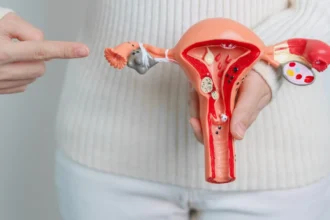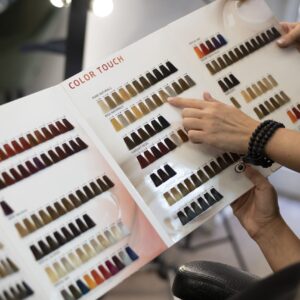Female african american scalp micropigmentation, a non-surgical hair loss treatment. The procedure, also known as hair tattooing, provides a viable solution for those dealing with a myriad of hair loss conditions, and it offers renewed confidence and empowerment.
Female african american scalp micropigmentation
African American women’s hair has unique characteristics and needs. The beauty of Scalp Micropigmentation, particularly for African American women, is its versatility and adaptability to diverse hair textures and skin tones.
Female african american scalp micropigmentation professionals adjust the technique to meet individual needs. The procedure often involves creating impressions that mimic the natural, tightly coiled hair pattern. Furthermore, professionals also ensure that the pigmentation color matches the client’s complexion for a seamless and natural look.
Benefits of Female african american scalp micropigmentation
- Addressing Hair Loss: Hair loss can result from a myriad of factors, including genetics, stress, illness, and hair styling practices. Scalp Micropigmentation provides a viable and instant solution for hair loss.
- Alleviating Traction Alopecia: Traction alopecia, a form of hair loss often caused by hairstyles that pull the hair tight, is prevalent among African American women. SMP can help camouflage the affected areas and create an illusion of a fuller scalp.
- Versatility: Female african american scalp micropigmentation allows women to maintain a low-maintenance, yet stylish look, giving them the freedom to partake in activities without worrying about their hair.
- Boosting Self-esteem: Hair loss can impact one’s self-esteem. With SMP, African American women can regain their confidence, knowing their hair looks full and natural.
- Long-lasting: SMP is a semi-permanent solution that can last several years with proper care and touch-ups, making it a cost-effective hair loss solution.
Female african american scalp micropigmentation advantages
- Female african american scalp micropigmentation could be an effective solution for hair regeneration for those grappling with male pattern baldness, thinning hair, or a retreating hairline.
- This straightforward, non-surgical technique provides immediate and long-lasting outcomes. It can also be a component of scar masking treatment, assisting in concealing scars from surgery or injuries.
- Nonetheless, it’s crucial to understand several potential hazards and side effects associated with SMP before you decide to proceed with it.
Explaining Female african american scalp micropigmentation & its procedure
- Female african american scalp micropigmentation, sometimes referred to as SMP, is a popular choice for concealing hair loss and scars, and is essentially a form of medical or paramedical tattooing. This technique makes use of cosmetic ink and a specialized PMU device.
- The process involves the careful selection and application of pigments that closely match the individual’s natural hair color, which are then inserted into the scalp skin. This creates small dots that simulate the appearance of hair follicles.
- By employing this technique, the practitioner is able to create an illusion of a freshly shaved head or ‘buzz-cut’ look, complete with a revitalized hairline and enhanced volume.
- With consistent upkeep, the results of scalp micropigmentation can be maintained for a decade or more.
Is Female african american scalp micropigmentation suitable for long hair?
- Indeed, Scalp Micropigmentation is a viable solution for those with long hair! Initially designed for bald individuals, this technology has evolved rapidly and can now cater to those with long locks. This technique proves especially beneficial for women struggling with hair loss. Micropigmentation can not only mask bald patches and retreating hairlines, but it can also enhance the appearance of thinning hair, making it seem fuller by utilizing a hue slightly darker than your natural hair color.
- Essentially, Female african american scalp micropigmentation offers a comprehensive solution for all hair loss concerns. The process involves filling in the space between hair follicles, so long hair doesn’t pose a problem; artists work around it! However, if you’re considering scalp Micropigmentation for long hair, bear in mind that because it was initially created for bald scalps, the outcome might be quite conspicuous when applied to a receding hairline with long hair still present.
- Consultation with an expert is crucial to ensure this treatment aligns with your needs. Sourcing a reputable, reliable provider is paramount for this procedure. With the right expert’s guidance, you can better understand the Micropogmentation process and choose the most suitable options for your hair.
Does Scalp Micropigmentation affect hair follicles?
Rest assured, Scalp Micropigmentation doesn’t damage hair follicles. The procedure is performed between hair follicles, aiming to create a sense of depth and simulate natural growth; hence, the needle doesn’t interfere with the follicle itself. During the process, the needle penetrates no more than 2 mm deep, a relatively shallow depth. Thus, even if the pigment is placed over the hair follicle, it doesn’t cause harm. It doesn’t hinder future growth or harm the existing hair. Female african american scalp micropigmentation is a safe treatment for any stage of female hair loss or thinning. If you notice additional thinning or loss, you can undergo more sessions to add further pigmentation if needed, as it won’t be a result of the procedure.
Is Hair Loss a Result of Micropigmentation?
Absolutely not! Micropigmentation does not induce hair loss. It is, in fact, a leading treatment for hair loss. For individuals grappling with hair loss, thinning hair, or a receding hairline, Scalp Micropigmentation offers a comprehensive solution devoid of any severe risks or side effects. This safe procedure involves a trained artist using needles to insert pigment between hair follicles, creating an illusion of natural hair growth. Employing a method known as pointillism, artists use thousands of tiny dots in various shades and colors to replicate naturally growing hair. This technique gives a bald scalp the look of hair follicles and allows artists to simulate the effect of dense, lush hair. This procedure offers a solution to hair loss, restoring confidence in just 2-3 sessions!
How to Take Care of My Scalp Post-Female african american scalp micropigmentation?
Post-procedure scalp care is equally important as choosing a trusted artist to perform Scalp Micropigmentation. To ensure the longevity of the treatment, certain care measures are necessary. If you’re familiar with tattoo aftercare, this process will be somewhat similar. Post-procedure, you’ll notice your scalp healing from the needle’s punctures, forming small scabs akin to any healing wound. Refrain from scratching, picking, or even touching these scabs during the healing process. Also, avoid shaving your head for at least a week following the procedure. As these small holes are essentially open wounds right after the procedure, they are vulnerable to infection if not properly taken care of. While your scalp is healing, steer clear from washing your head or getting it wet in any way, including swimming and sweating excessively – so hold off on those strenuous workouts for a bit. Adherence to your aftercare guidelines is crucial to minimize any potential Scalp Micropigmentation risks.
Conclusion about Female african american scalp micropigmentation
The emergence of Scalp Micropigmentation as a popular hair loss solution amongst African American women reflects the evolving landscape of hair care and beauty norms. The Female african american scalp micropigmentation procedure not only offers a solution to the physically daunting issue of hair loss but also addresses the psychological impact, helping women to regain their self-confidence and feel empowered in their skin. As more African American women embrace this innovative procedure, Scalp Micropigmentation stands poised to redefine standards and perceptions of beauty within the community.
Related article: Healthy nutrition for women













